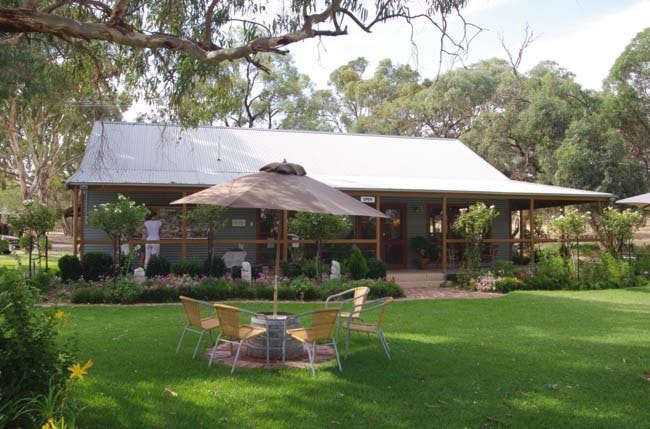Peter Neville-Hadley
Meridian Writers’ Group –
Adelaide, Australia — About 70 kilometres northeast of South Australia’s capital, Adelaide, country roads lined by feathery gum trees wind through rolling land striped with the vines of one of Australia’s oldest wine-growing regions, the Barossa Valley, famous for big, bright, high-alcohol red wines.
The narrow roads weave through hamlets of verandahed wooden houses with shiny tin roofs, between lines of stately date palms and around hillsides stippled with olives and neatly hatched with vines.
More than 70 of the Barossa’s vineyards are open to the public year-round, and over half can be visited without an appointment. Since many cellar doors don’t open before 11 a.m., there’s time for breakfast in Adelaide before a slow, scenic drive through the countryside, enjoying the look of the region before stopping to try its taste.
The Barossa has names of global fame, such as Wolf Blass, Peter Lehmann and Penfolds, but in between the big estates lie many smaller, family-run vineyards selling mainly through the cellar door and offering tastings, free advice and an unpretentious atmosphere.
Tastings are usually free, except for “museum-released” stock of past triumphs and now of limited availability. Some winemakers also sell wine by the glass, as well as offering cheese plates and other accompaniments. Since alcohol volumes often reach 15 per cent, drivers who choose to drink rather than just taste and spit need to be cautious—pausing for a vineyard-produced light lunch is a good idea.
The Pfeiffer family’s Whistler Wines produces about 9,000 cases a year from its own grapes, and 70 per cent of this modest production is sold directly to visitors. The winery’s weekend concerts are big draws, but the traditional, tin-roofed homestead has comfortable sofas at any time and there’s a lawn dotted with sunshades, tables and chairs at which to enjoy a glass of potent Reserve shiraz or a fruity Audrey May semillon.
The cellar door at Eden Valley’s Glen Eldon vineyard is a bright metal shed with a wooden walkway up to a quiet tasting room overlooking the vineyard. Downstairs, grapes are crushed and wine fermented, leaving plenty of space upstairs to try the results of these efforts, and especially the flagship shiraz, dark and fruity and likely to taste even better if taken home and left alone for a few years. Visitors typically take half a case, at a modest saving over Adelaide shop prices.
Rockford Wines occupies brick farm buildings from 1857, where Robert O’Callaghan makes wine from the fruit of 30 growers who use traditional hand-rearing methods in keeping with the antique basket presses at the winery. In the Southern Hemisphere’s autumn months of March and April these can be seen spewing juice from between their slats. Great lakes of liquid and pulp are stored in century-old vats made from local slate, filling the air with the yeasty smell of fermentation underway.
O’Callaghan not only produces one of Australia’s best shirazes, but a wine from the obscure alicante bouschet grape, whose naturally red flesh produces a crisp rosé that makes perfect summer drinking.
But it’s only available at the cellar door.
Explore More:
For more information on the Barossa Valley visit the Barossa Grape & Wine Association’s website at www.barossa.com.
For more information on the three wineries in the story visit their websites at: www.whistlerwines.com, www.edenvalleywines.com.au and www.rockfordwines.com.au.
For information on travel in Australia visit Tourism Australia’s website at www.australia.com.
